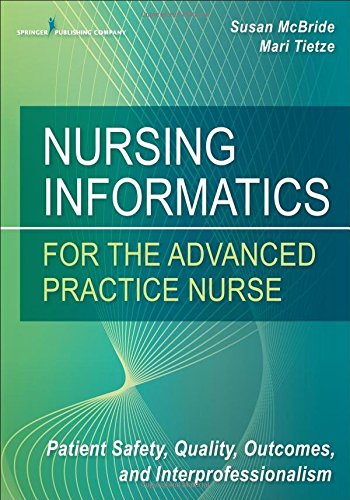

Most ebook files are in PDF format, so you can easily read them using various software such as Foxit Reader or directly on the Google Chrome browser.
Some ebook files are released by publishers in other formats such as .awz, .mobi, .epub, .fb2, etc. You may need to install specific software to read these formats on mobile/PC, such as Calibre.
Please read the tutorial at this link: https://ebookbell.com/faq
We offer FREE conversion to the popular formats you request; however, this may take some time. Therefore, right after payment, please email us, and we will try to provide the service as quickly as possible.
For some exceptional file formats or broken links (if any), please refrain from opening any disputes. Instead, email us first, and we will try to assist within a maximum of 6 hours.
EbookBell Team

0.0
0 reviewsDesigned specifically for graduate-level nursing informatics courses, this text focuses on using technology with an interprofessional team to improvepatient care and safety. It delivers an expansive and innovative approach to devising practical methods of optimizing technology to foster quality ofpatient care and support population health initiatives. Based on the requirements of the DNP Essential IV Core Competency for Informatics and aligning withfederal policy health initiatives, including the Affordable Care Act, the book describes models of information technology the authors have successfullyused in health information technology (HIT) to reinforce core competencies needed in multiple practice settings. Data management and analytics areemphasized in the text, supporting clinical improvement as well as business aspects of the health care system. The authors espouse a hybrid approach toteaching with a merged competency and concept-based curriculum.
With an emphasis on the benefits of an interprofessional team, the book describes the most effective approaches to health care delivery using healthinformation technology. It describes a nursing informatics model that is comprised of three core domains: point-of-care technology, data management andanalytics, and patient safety and quality. The final section of the text explores new and emerging technologies, including genomics, nanotechnology,artificial intelligence, data mining, expanded use of electronic measurements, and innovations in patient engagement in social media. Case studies andcritical thinking exercises support the concept-based curriculum and facilitate out-of-the-box thinking. Supplemental materials for instructors includePowerPoint slides and a test bank. While targeted primarily for the nursing arena, the text is also of value in medicine, health information management,occupational therapy, and physical therapy.
KEY FEATURES: